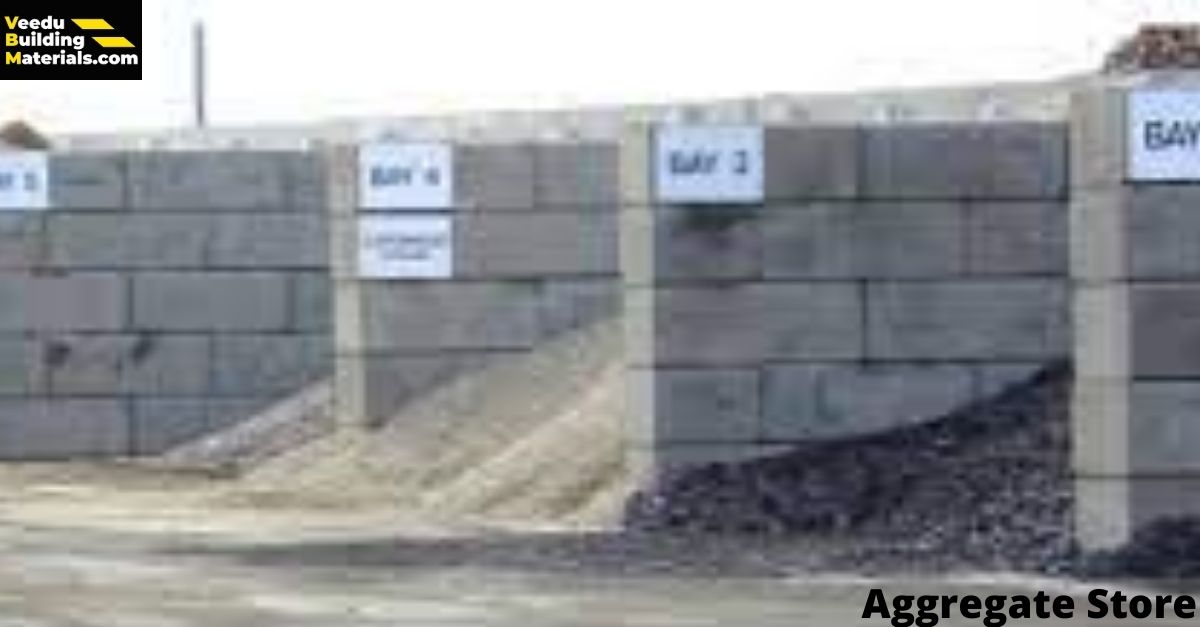Cement and aggregates are the most important components of cementitious screed and concrete. The quality and effectiveness of screeding mix/concrete greatly depend upon its components. A question raises in everybody’s mind about how to store cement and aggregates at a construction site. Hence, it becomes important to take proper care of the storage and handling of these materials.
This post will show you how to store cement and aggregates in the most efficient way possible. So, you can preserve the quality and fineness of these materials for the best results.
How to store cement bags at a construction site
Keep away from moisture.
Cement is climate and water sensitive. It forms hard clumps when exposed to wetness. Thus, it is important to keep it protected from water (for example, rains, floods, and leakages) and moisture. Preferably, we should store the cement bags in dry and enclosed structures. One can also use waterproof sheets or tarpaulins for enhanced protection from dampness.
Do not place bags directly on the ground or on wooden planks.
We should not place the bags on the concrete ground or wooden surface. Because of cement’s tendency to absorb moisture, it is better to select a dry, moisture-free surface for storage. It is also good to stack the bags on raised platforms with plastic sheets underneath. The platform should be about 150 mm to 200 mm in height.
Use the first ones first.
We should keep the cement bags as per their manufacturing dates. That means the oldest ones should come right at the top. The cement depreciates in strength and quality with time. So, ‘first in, first out’ also applies to cement stock.
Do not use sharp objects for handling.
Make sure that the bags do not puncture in any way. That may expose them to water and contaminants. We should not use hooks for carrying the bags from one place to another. Also, while transporting, take care that the bags do not come in contact with any sharp objects during loading/unloading.
Arrangement of cement bags
- The cement bags should be at least 40 cm away from the wall.
- The maximum height and width of the cement stack should be 15 bags and four bags, respectively.
- The header stretcher stockpiling method works best for cement bags.
- To minimize air circulation, keep the bags close to one another.
- Better to keep the windows and doors of the warehouse/storage space shut.
- We should store different types of cement separately. Ensure the cement packed in different bags, such as gunny bags, polythene bags, and paper bags is kept separate.
How to store aggregates at a construction site
Almost all kinds of landscaping and construction projects require aggregates in bulk quantities. Aggregates come in different shapes and sizes with varied characteristics. As a result, we must keep them separate and in ideal conditions.
Keep away from moisture.
All aggregates vary in their moisture requirements. Some may withstand high moisture, while others may harden with exposure to wetness. Therefore, we should take enough care while choosing the storage space. We should keep aggregates away from damp and moist surfaces as far as possible. Also, we should ass the storage area frequently for moisture control.
Keep different aggregates separate from each other.
Fine and coarse aggregates should be a distance apart. Additionally, we should stock different varieties of coarse aggregates in separate piles. One can use retaining walls to avoid overflowing aggregates into each other. Pyramid structures work the best for aggregate stockpiling. It helps in utilizing the height, thus minimizing ground space requirements. As far as possible, keep the sand away from wind exposure.
Choose flat, level ground for storage.
Flat, hard, and level ground are best for storing all kinds of fine and coarse aggregates. Ensure that the surface is completely dry and devoid of moisture. In case of a lack of dry storage area, one can also create raised platforms for stockpiling. It is essential to keep all the aggregates separate from each other. We should use dividing walls for separation.
Adequate, protected storage space
Storage space should be adequate for the quantity and the type of aggregates one plans to store. The larger stockpiles will require more space. At the same time, small stockpiles which need frequent replenishment can accommodate in smaller spaces.
Ideally, the space should be slightly away from the worksite. Also, it should offer enough protection from climatic conditions such as wind and rain. It is better to have a covered space with walls and an overhead ceiling.
Use plastic or tarpaulin sheets.
Covering the aggregate heaps with plastic or tarpaulin sheets can provide enhanced protection. It reduces the exposure to wind, moisture, leakages, and contaminants on the site.
Keep the storage site easily accessible.
Accessibility is another key factor in choosing the right storage site. The site should be easy to access for foot personnel and vehicles. At the same time, it should be closer to the construction area. It will allow quick delivery and transfer of aggregates for construction work.
Conclusion
Every construction material requires careful handling, transportation, and storage. Cement and aggregates are pivotal to every construction activity. Hence, their careless handling can result in high wastage and loss of time and money. If possible, store these materials in dry places with minimum exposure to wind and rains. Ensure to clean and level the surfaces before stockpiling. Also, keep the storage site closer to the construction site to minimize transportation and transfer time. These modest actions will significantly impact the strength, durability, and performance of the screed/concrete mix. We think you must get answers to some extent to your question: how to store cement and aggregates. Please visit our site if you have any other queries about the construction materials.


Leave a Reply